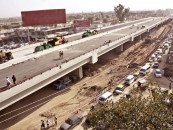A nasty and dangerous phase
.

The fragile ceasefire between Pakistan and India may remain intact, but tension is far from over. The two nuclear-armed neighbours, with a long history of wars and military standoffs, are now entering a new, far more perilous phase in their relationship.
Consider the post-Pulwama episode of February 2019. Despite India's airstrikes on Balakot and Pakistan's swift military response, tensions were de-escalated relatively quickly. Diplomatic ties, though briefly strained, were soon normalised. Borders remained open, and even the Indus Waters Treaty — often cited as a pressure point — was not weaponised. In fact, weeks after the military standoff, then-Prime Minister Imran Khan went so far as to express a preference for Modi's re-election, believing a hardliner like him might finally resolve the deadlock. That assumption, however, was wrong.
Today, the landscape is starkly different. After the Pahalgam attack, India took a series of unprecedented steps. It suspended the IWT for the first time since 1960, closed the Wagah-Attari border, expelled military advisers, reduced diplomatic staff, and ordered all Pakistani nationals to leave the country. Pakistan responded in kind.
Then came the events of May 6th and 7th. In a dramatic escalation, India launched missile and drone strikes deep into Pakistani territory. For the first time, the world witnessed an exchange of missiles and drones between two nuclear powers. What made matters worse was the disinformation campaign run by Indian media.
On the eve of Pakistan's counter-strike to India's so-called Operation Sindoor, Indian news outlets spread false reports — claims of Karachi Port being bombed, Indian forces entering Lahore, and even the Indian flag flying over Islamabad. These fabrications were quickly debunked by international media, which confirmed that India's attempts to set a new normal had failed. Notably, the downing of advanced Rafael jets by Pakistan remains a hot topic in global defence circles — one India refuses to acknowledge, citing vaguely that "losses are part of combat."
The broader implications of this latest flare-up are deeply troubling. Pakistan and India appear poised for their most dangerous confrontation yet. Frustrated by setbacks and international apathy, Prime Minister Modi is doubling down on aggressive diplomacy. India has dispatched bipartisan delegations worldwide to present its narrative, while simultaneously pushing for Pakistan's diplomatic and economic isolation.
One telling move came just days after the conflict: Indian External Affairs Minister S Jaishankar's visit to the Netherlands. This was no routine stopover. The Dutch have played a key role in strengthening Pakistan's maritime security, including supplying mine-hunters and offshore patrol vessels. India's goal was clear: pressure the Dutch to halt such cooperation. Similar efforts are underway with Pakistan's other economic and defence partners.
India is also believed to be leaning heavily on regional allies to discourage any financial or strategic collaboration with Islamabad. There are signs that India is lobbying behind closed doors, using economic leverage and diplomatic influence to corner Pakistan multilaterally.
Pakistan on the other hand is actively pursuing its own game plan. Together with its close allies and international partners, Islamabad is making efforts to nullify New Delhi's campaign. Despite limited resources and other challenges, Pakistan has demonstrated it could take on India both on the battlefield and diplomatic front.
While India is struggling to find answers to its miscalculation, Pakistan is looking to take advantage of the opportunity its eastern neighbour has thrown at it. The decision-makers in Rawalpindi and Islamabad, however, must not be complacent. India will not take this defeat lightly. It would resort to both covert and overt actions to undermine Pakistan. The coming months could well see the region descend into a new and even more volatile chapter — one that might push South Asia closer to a conflict of unprecedented scale.















COMMENTS
Comments are moderated and generally will be posted if they are on-topic and not abusive.
For more information, please see our Comments FAQ